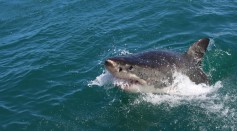Santa Cruz
Where Is Hell Hole Cave? Why Are Claustrophobics Discouraged From Entering It And Those Who Have Been There Don't Want to Return?

Surfer in Santa Cruz Dies in Northern California’s First Fatal Shark Attack in 16 Years
The Energy for a New Crawl—Galápagos Tortoises Feast on Invasive Plants for a New Foraging Technique
Is Climate Change To Blame for These Blooming Pink Nudibranchs?
Most Popular

How Technology Is Changing the Real Estate Industry?

How a Plant-Based Diet Can Protect Against Breast Cancer: Insights from Nutrition Research

Study Reveals High Turnover in Scientific Research Careers: What This Means for Future Scientists

Why It's So Difficult to Lose Weight: The Biological Explanation Behind Obesity





